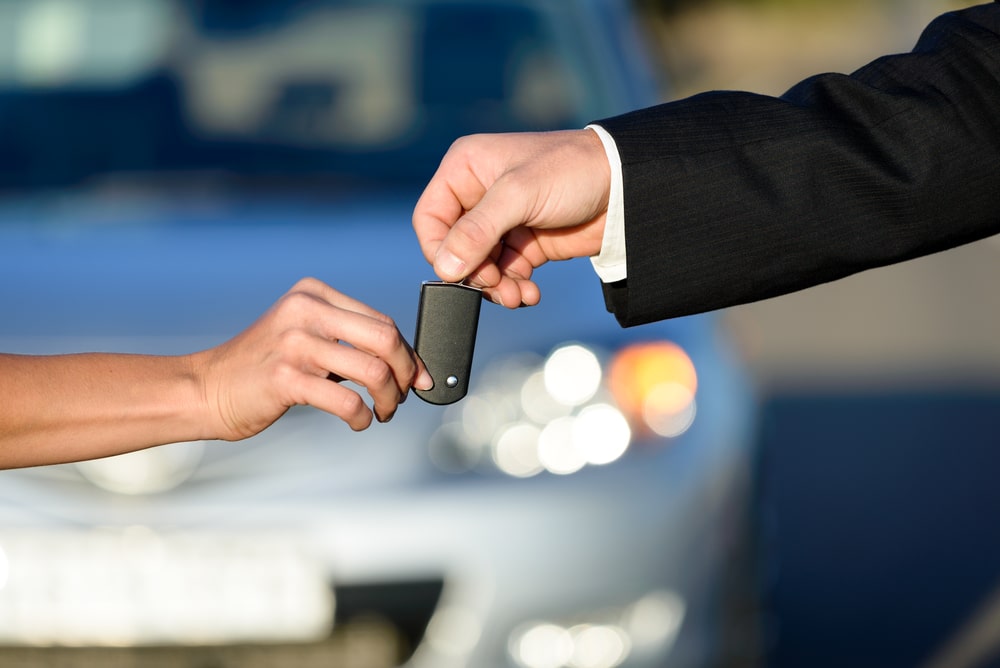While buying a new car can be exciting, it can also be costly. Depending on the make and model you choose, you might spend at least $20,000 or more on the purchase. Regardless, not everyone has the cash on hand to pay in full, so securing a loan and committing to monthly payments to finalize the transaction is inevitable.
But what happens if your personal and financial circumstances change before you pay off the loan? Is it possible to sell your car when it’s not paid off?
The answer is yes. Selling a car that isn’t paid off is possible. Let’s look at a few scenarios and options to consider moving forward.
How to Sell a Car That Is Not Paid Off
If your car is paid in full, the process to sell it is much simpler. For example, you don’t have to worry about paying the lender or having negative equity. But when you still have a loan to pay off, you will have to take a few additional steps to complete the process.
-
Determine Your Car’s Worth
Before selling your vehicle, you first need to determine its value. Several websites like Kelly Blue Book (KBB) and Edmunds offer tools to generate an estimate for a car’s trade-in value and overall worth. You will need to search your vehicle’s make, model, year, and mileage to do this. You can also enter your VIN or license plate number to get a more accurate appraisal.
This information is critical in determining whether you will profit, break-even, or end up in the red if you sell. Once you have a general idea of your car’s worth, you can then move forward and start comparing numbers.
-
Talk to Your Lender About Your Loan Payoff Amount
Lenders will only release ownership and sign off on a title once a vehicle’s loan is paid off. Therefore, your next step will be getting your payoff balance, which is how much it will cost to own your vehicle. You can contact your lender directly or log in to your online account to find this information. Another option is to ask your lender for a letter stating the payoff amount and how long the numbers remain active. The letter may also include steps to complete the loan payment.
Once you have the payoff balance, subtract that number from the number you generated from Kelly Blue Book or Edmunds to get your car’s value estimate. This information will help give you a general idea of the amount of money you will receive when you sell or trade your vehicle. It will also help you decide if selling is the best step to take financially.
If the number is negative, it means you have negative equity and owe more than what the car is worth. Consequently, selling your vehicle won’t cover your loan balance. Therefore, whatever you get from the sale will go straight to the lender.
But remember, you may see an increase in your car’s resale value if you:
- Took good care of it
- Followed the recommended maintenance schedule for preventive services
- Kept a comprehensive car maintenance log
- Purchased a transferable extended car warranty.
-
Identify Your Buyer
Once you know where you stand financially, you can decide whether to continue making payments, sell it to a private buyer, or trade it to a dealership. If you have negative equity, postponing the sale until you can pay off the loan may be best. But you may be able to secure a personal loan to pay off the remainder of your balance and get the lienholder’s name off the title, pending you have good credit.
Going through the dealership…
Should you decide to trade in your car, the dealer can add the negative equity to the loan for your next vehicle. This process is more straightforward than selling to a private buyer with negative equity. But keep in mind this will result in a bigger loan for your next vehicle. So before you take this step, you may want to get preapproved for a new loan first, which can prevent the dealer from inflating the rate.
Additionally, make sure you also confirm your credit score, loan interest rates, and your car’s trade-in value. Knowing all of these things will help you negotiate the best possible deal. Once the transaction is complete, follow up with the dealership to confirm they connected with your lender and paid off the car’s debt.
Selling to a private buyer…
The process to sell your car to a private buyer will be more complicated when your loan is not paid off. To start, you will have to pay your lender the remainder of what you owe. For example, if you owe $6,000 on your loan and sell the vehicle for $5,000, you will have to come up with an additional $1,000 to give to the lender. The private buyer will be responsible for paying the sale amount to the lender, and you will pay the difference. Again, you can take out another loan to make up the difference or simply pay in cash if you have it.
Once the car is paid-in-full, the lender can sign the title and give it to the buyer to get a new title and registration. Working with your provider will help to streamline the process.
Ensure Your Car Is Covered With Breakdown Protection
Whether you buy a new car or keep what you own, a reliable protection plan can add value to your vehicle and cover you in a future breakdown. Instead of worrying about out-of-pocket repair costs, you can rest easy with the right plan. Start reviewing our top extended warranty providers now, and then request your free quote to get started.





